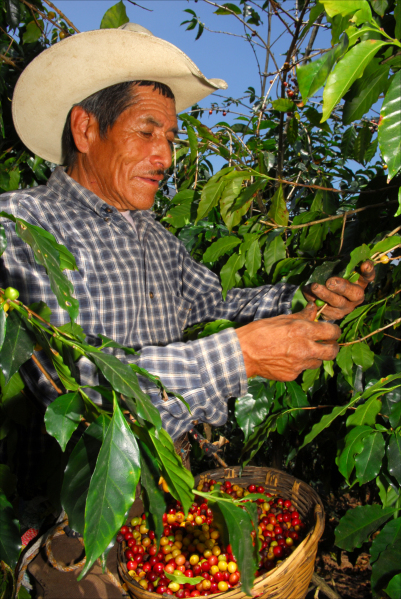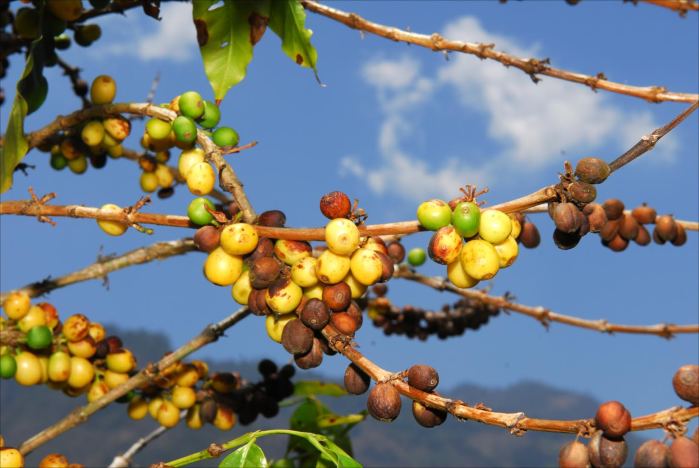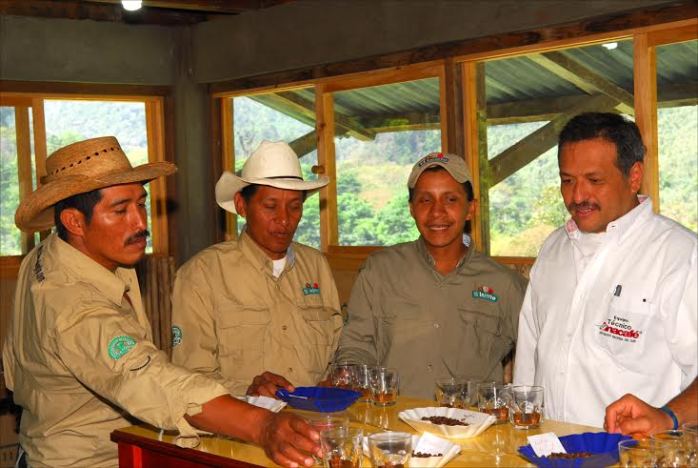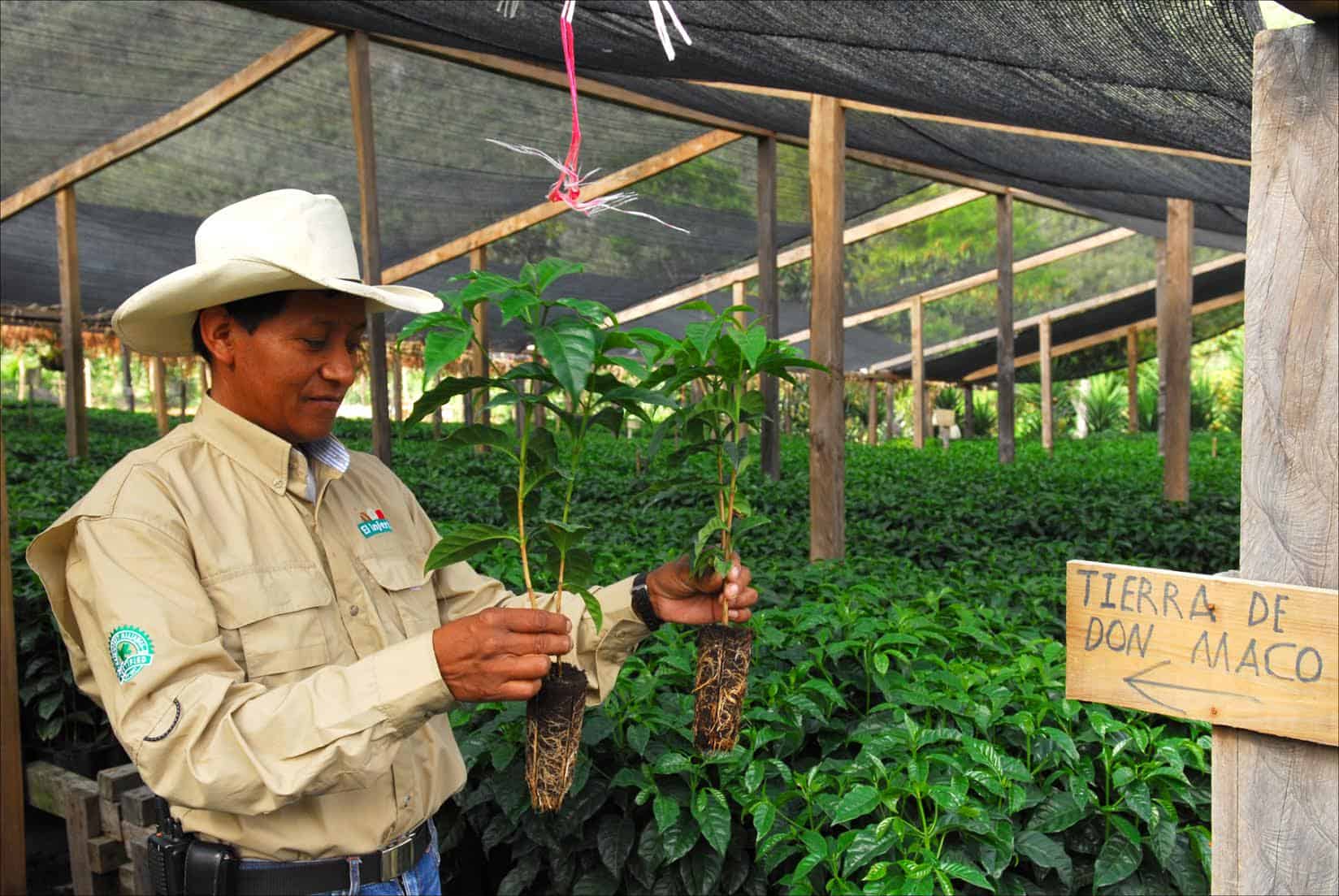WASHINGTON — Guatemalan coffee growers, devastated by a fungus known as roya that rots the leaves of coffee plants, must “learn to live” with the killer disease.
That’s the sad conclusion of Julio Ligorría, Guatemala’s ambassador to the United States, speaking Wednesday to The Tico Times.
“Roya in Guatemala is here to stay, and the coffee growers need to learn to live with it and prevent it yearly by applying fungicides in a timely manner,” Ligorría said. “Given that most coffee producers are micro- and small-sized, it is more difficult to control and make sure all of them do their best effort. That is why in some cases Anacafé (Guatemala’s National Coffee Association) recommends rust-resistant varieties.”
He added that Anacafé is also making large-scale purchases of fungicides in order to give these smaller growers access at reduced prices.
“I think one of our best chances will come from renewing the oldest plantations, so that younger, more vigorous plants will take on the fight against roya, instead of old and weak plants,” the ambassador explained. “That requires a lot of investment and a longer period of time, since you cannot renew all coffee zones at once.”
During the first 10 months of 2014, coffee exports generated $628.5 million — surpassed among all agricultural products only by sugar ($777.1 million), according to the Bank of Guatemala. That put coffee ahead of bananas ($550.9 million), fresh fruit ($189.5 million) and cardamom ($170.9 million). During the 2013-14 growing season, exports came to 4.08 million quintales (100 pounds), down from 4.8 million quintales the previous season.
Despite the crisis, Ligorría said the 2014-15 season is likely to show a slight improvement to 4.2 million quintales, thanks to new plantings as well as the pruning of older coffee trees that are starting to produce.
“On the income side, we think we will have a decrease, since last year’s average price was around $2.10 per pound and today, prices are $1.70 per pound,” he said. “Remember that the coffee sector is the biggest employer in Guatemala, and that 70 percent of the cost of coffee comes from labor. Therefore, lower prices mean less ability to fertilize, and thus less to be harvested at the end of the year.”
Guatemalan coffee reached its peak volume in 2011-12, when its farmers produced 4.8 million quintales worth $986 million. The year before that, 2010-11, volume was slightly less, at 4.7 million quintales, but thanks to high prices, those beans generated a record $1.14 billion in foreign exchange. Pricewise, the worst season was 2005-06, when coffee brought in only $463.4 million.
According to Anacafé, Guatemala ranks eighth in worldwide coffee exports — just behind Peru and just ahead of Mexico — accounting for about 3.5% of
the total. The largest exporters are Brazil (26.7% of the total), followed by Vietnam, Colombia, Indonesia and India.
Among Central American countries, Guatemala ranks second in coffee exports after Honduras (5%), but it’s still far ahead of Nicaragua (1.5%) and Costa Rica (1.3%).
Guatemala’s area planted with coffee has increased by 10.5% in the last eight years, from 276,000 hectares in 2006 to 305,000 as of September 2014, according to Anacafé. Meanwhile, the number of producers has jumped by 35% over the same period, from 90,000 in 2006 to 122,000 producers today. Anacafé predicts the 2014-15 crop will increase by 5% to 7%, but says this depends to a large extent on growers obtaining proper financing to be able to recover. Top officials of the association recently told Guatemala’s Prensa Libre newspaper that the sector could see production of 4.8 million quintales within two years.
In Guatemala, coffee rust now covers 70% of the crop, compared to just over 60% for Costa Rica. The fungus has been around for years but has recently become more aggressive, likely due to climate change, since it thrives in hotter weather. Throughout Central America, it’s already caused crop losses of more than $1 billion; in Guatemala alone, some 100,000 jobs have already been lost as a result.
Last summer, Starbucks and Green Mountain — two major U.S. buyers of Guatemala’s prized arabica coffee — teamed up with the U.S. Agency for International Development, reported NPR.com. Together they have pooled more than $23 million to offer financing to repair crops and fight the scourge.
In 2011-12, some 45% of Guatemala’s coffee exports went to the United States, another 27% to Europe, 16% to Asia and 8% to Canada.
Asked if there’s a link between Central America’s continuing coffee crisis and a dramatic spike in the influx of unaccompanied minors from El Salvador, Guatemala and Honduras to the United States, the ambassador said absolutely yes — and that Guatemala’s troubled country’s coffee sector needs more outside assistance immediately.
“There is certainly a relationship, though not yet fully identified, but it is here where the Alliance Plan for Prosperity has one of its most solid arguments,” Ligorría said referring to the development plan created by the governments of Guatemala, El Salvador and Honduras in response to the immigration crisis. “We need to build and diversify employment opportunities, improve social conditions and systems of justice and management — and we hope to achieve all this with the plan.”








